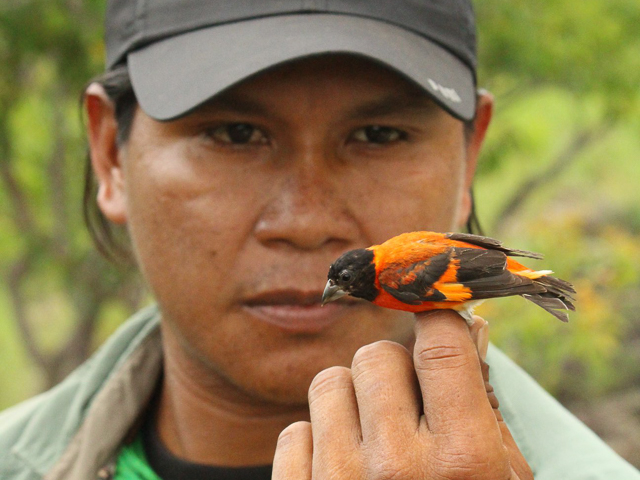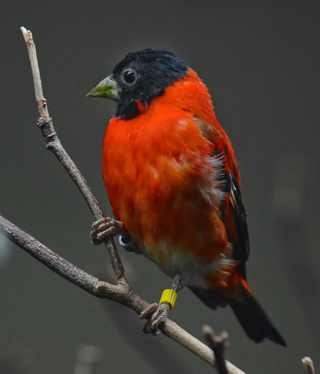NCMNS Ornithology Unit awarded National Geographic grant for conservation of endangered Red Siskin
For immediate release ‐ March 04, 2021
Contact: Jon Pishney, 919.707.8083. Images available upon request
 A Senior Ranger with a male Red Siskin. Photo: Meshach Pierre.
A Senior Ranger with a male Red Siskin. Photo: Meshach Pierre.
NCMNS Collections Manager for Ornithology Brian O’Shea and the South Rupununi Conservation Society (SRCS) have been awarded a National Geographic Species Recovery grant ($44,447) to continue their work on the (IUCN Endangered) Red Siskin (Spinus cucullatus) in Guyana.
Their project, “Implementing a Community-based Conservation Management Zone to Protect the Red Siskin in the South Rupununi, Guyana,” will leverage grassroots support to provide a framework for the protection of the Red Siskin, drawing on detailed knowledge of the species accrued over years of surveys. Found only in parts of Colombia, Venezuela and Guyana, Red Siskins have been trapped relentlessly for the international cage bird trade and have disappeared from large areas of their historical range.

Red Siskin at the Smithsonian National Zoo.
This project will engage six Indigenous communities to develop the boundary for a conservation zone, encompassing up to 150,000 hectares and managed entirely by the communities. Project staff will work with those communities to create rules to discourage the trapping of siskins and destruction of their habitat and have community rangers monitor the zone. Project staff will enlist support from the government of Guyana to bestow enforcement authority upon community representatives.
This project will complement ongoing survey and education work by SRCS in the region, much of which is focused on Red Siskins, and will serve as a focal point for international birdwatchers and ecotourists who support local economies.
Establishing a zone with tangible boundaries and managed entirely by its Indigenous residents will effectively deter external threats and lead to an increase in the Red Siskin population. It will also provide an ideal site for future projects including habitat restoration for Red Siskins and community conservation of other threatened wildlife.

